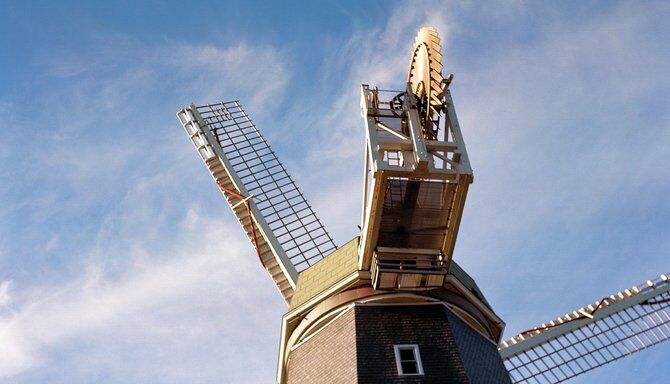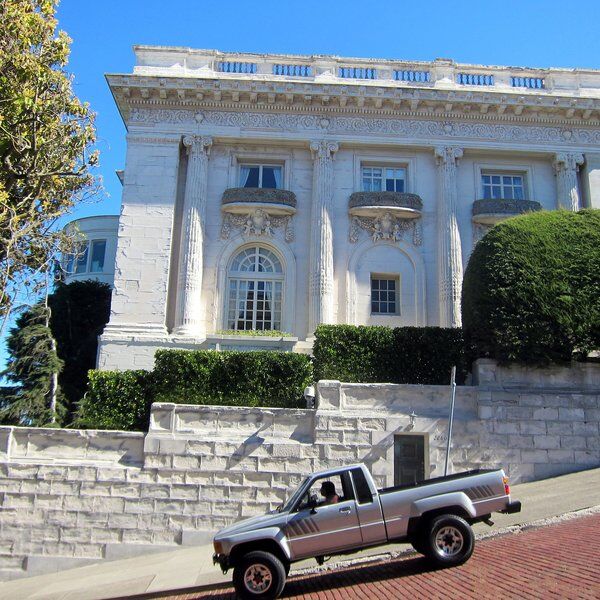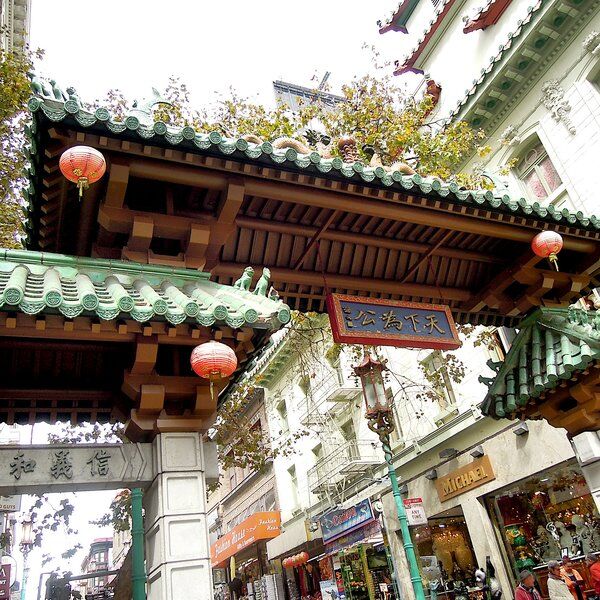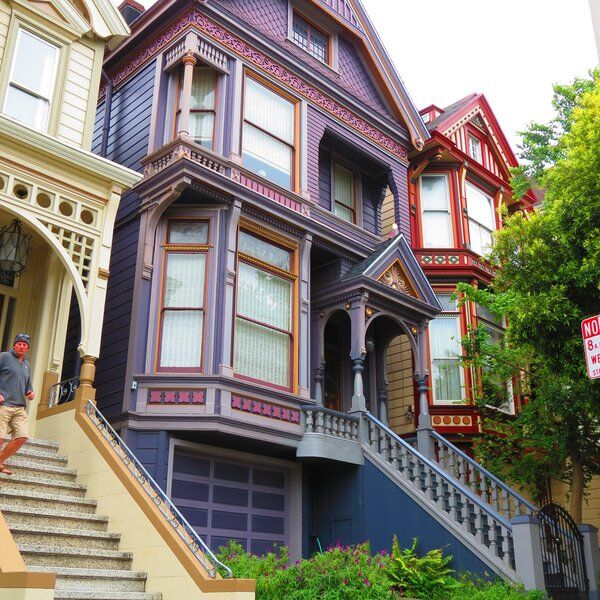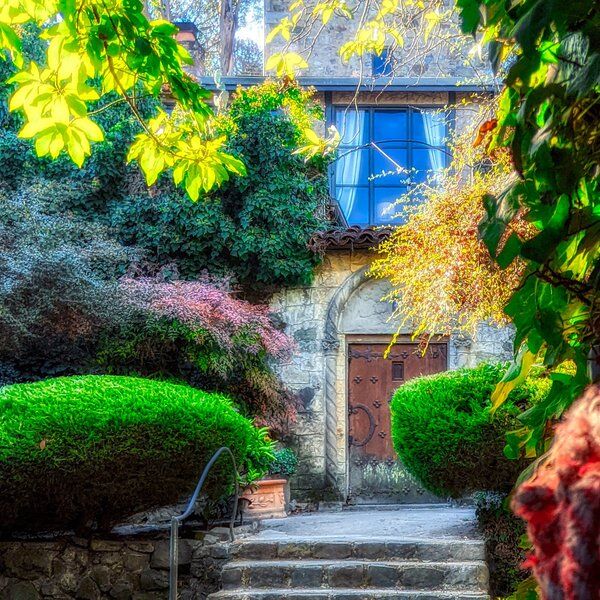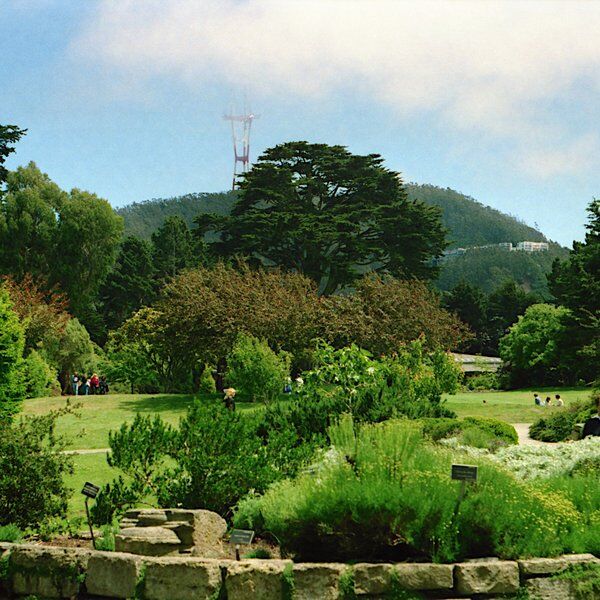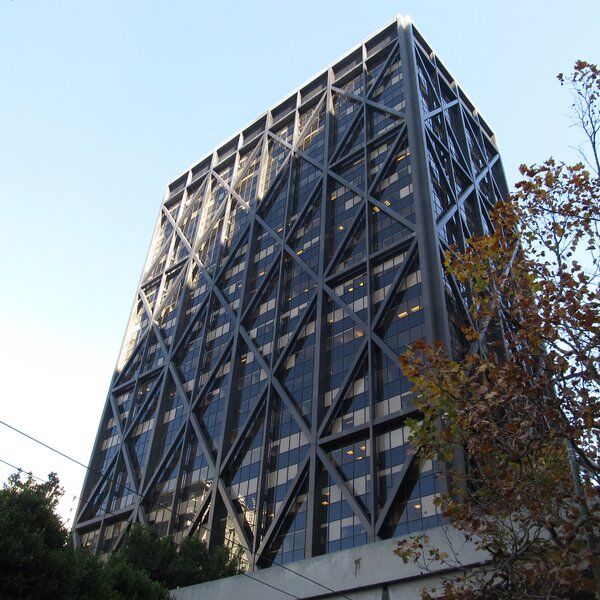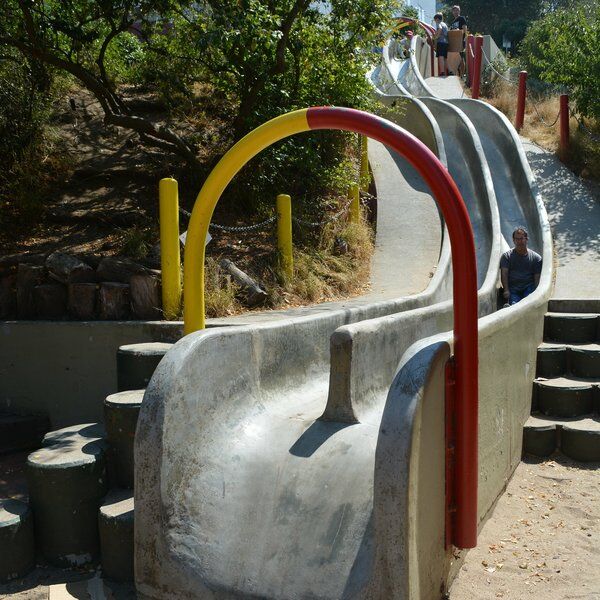Discover the Murphy Windmill
San Francisco's Golden Gate Park, known for its beautiful Botanic Gardens and iconic views over the Golden Gate Bridge, is home to the Murphy Windmill, one of two traditional Dutch-style windmills. Located on the park's western edge, these windmills have intrigued visitors for over a century. The Murphy Windmill stands out, not just for its size—it was once the largest windmill outside of Holland—but for the role it played in providing water to the Golden Gate Park.
After its creation, Murphy Windmill, also known as the South Windmill, quickly became a popular landmark in San Francisco. In 1915, it gained cinematic fame by appearing in Charlie Chaplin's movie, “The Jitney Elopement”. The windmill also attracted daredevils, such as Velma Tilden, who in 1921 rode the sails for 25 full rotations to win $25 worth of chocolates. Today, the Murphy Windmill is celebrated as a piece of the city’s cultural heritage. Even though it is no longer used for its original purpose, the blades can often be seen turning, driven by Pacific breezes.
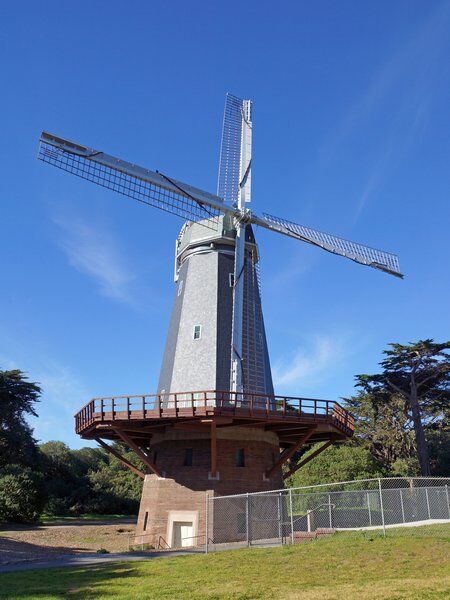
Creating Golden Gate Park
In 1867, Mayor Frank McCoppin, recognizing the need for a recreational space for San Francisco’s growing population, proposed creating a park on a barren area of land on the city’s outskirts. Despite skepticism about whether trees could thrive there, the task fell to William Hammond Hall, a young engineer with no landscaping experience, to design the park.
Hall began by mapping the 1,013 acres designated for the park. He discovered fertile soil and ample water east of what is now 14th Avenue, but the remaining 730 acres posed a challenge. A breakthrough came when barley, mixed with lupine and manure, took root in the sand, providing the foundation for planting 155,000 trees by 1879. However, sustaining this greenery required a lot of water, from a reliable source.

Creating the Dutch Windmills
By the late 1800s, Golden Gate Park's irrigation needs were met by the Spring Valley Water Company, but they had expensive rates.
Windmills, including the Murphy Windmill, operate by harnessing wind energy through sails, or vanes, attached to a central axis. As the wind pushes against the sails, they rotate, spinning the shaft. Gears in the dome connect to a vertical shaft running down through the tower to a pump mechanism on the ground floor. This energy can pump water or generate electricity, depending on the windmill's purpose.
John McLaren, the park's director, proposed using windmills to tap into underground aquifers near Ocean Beach. This idea led to the construction of the Dutch Windmill, followed by the Murphy Windmill.
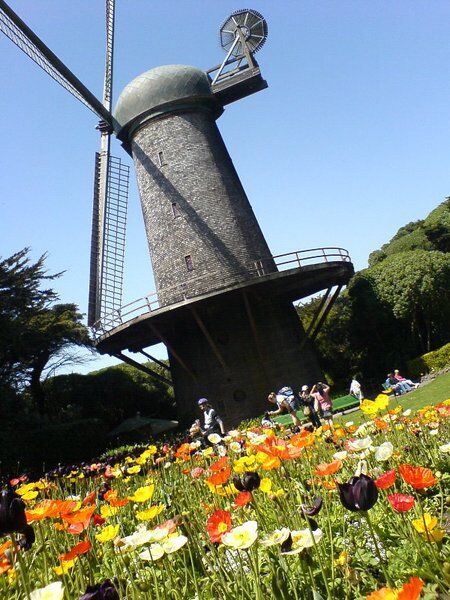
The Dutch Windmill
Construction of the first windmill, known as the Dutch Windmill, began on May 23, 1902, and was completed a year later. As a beautiful, yet useful structure, the mill had a cutting-edge rotating headcap that allowed the blades to adjust according to wind direction.
By June 1903, it was pumping between 15,000 and 20,000 gallons of water an hour, banking the excess in a 200,000-gallon reservoir, enabling park officials to sell surplus water to nearby neighborhoods.
The Murphy Windmill
Inspired by the success of the Dutch Windmill, Sam Murphy, the president of the First National Bank, donated $20,000 in 1905 for the construction of a second windmill. Named in his honor, the Murphy Windmill was completed in 1908. This new windmill was designed by Bay Area engineer J.C.H. Stut, and featured both Dutch and European elements yet its design was unique. While traditional Dutch windmills' sails turn counterclockwise, the Murphy Windmill's sails turn clockwise.
Standing at the southwest edge of Golden Gate Park, the new windmill was larger than its predecessor and the largest of its kind in the world at the time of its construction. At 95 feet tall with 114-foot sails, each cut from a single log, the windmill was designed to harness the consistent winds at the west end of the park, producing about 70,000 gallons of water daily during summer months and up to 40,000 gallons per hour at full capacity in stronger winds. This helped transform the land’s barren sandy dunes into the luscious green Golden Gate Park we know today.
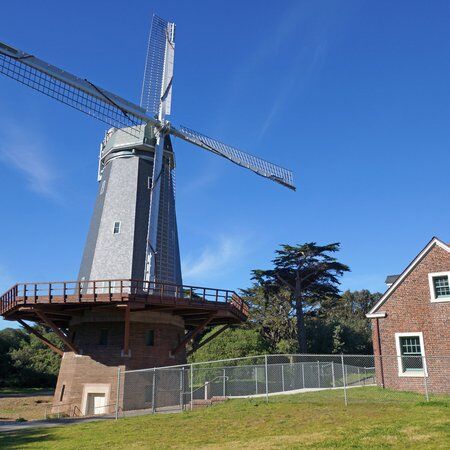
The Millwright’s Cottage
Completed in 1910, the Reid Brothers designed the adjacent Millwright’s Cottage, to house the windmill keeper, whose duties included oiling the bearings and shutting down the windmill in high winds. Both the windmill and the Millwright’s Cottage were designated San Francisco Landmarks in 2000.
Community Support and Opening the Windmill
The windmills required substantial contributions. Former Park Commissioner W.J. Dingee donated 1,500 tons of concrete, Louis Sloss provided copper for the dome, and Wendling Cross Lumber contributed timber.
The Park Commission also ordered the construction of a new lake, named Metson Lake, to store the water pumped by the new windmill. Despite its official name, the San Francisco Examiner referred to it as the "new Dutch Windmill" in the dedication ceremony on April 11, 1908, presided over by Mayor Edward Taylor and John McLaren.
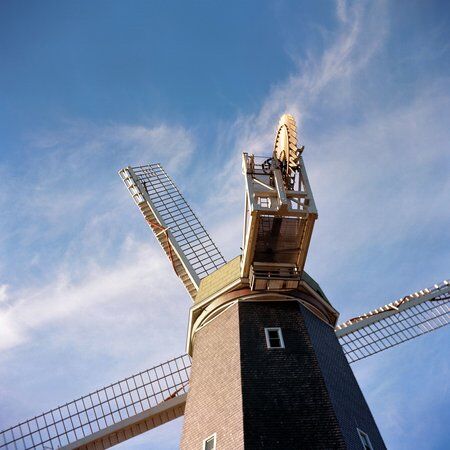
The Decline of Murphy Windmill
By 1913, the windmill's purpose had been rendered obsolete by electric pumps and maintenance ceased, with the windmill being decommissioned in the 1930s. The once mighty structures began to deteriorate under the relentless blowing of sand and salty ocean air. By the 1950s, both windmills were in severe disrepair. Park officials made efforts to secure funds for either the windmills’ repair or demolition but they were unsuccessful, leaving them to further decay.
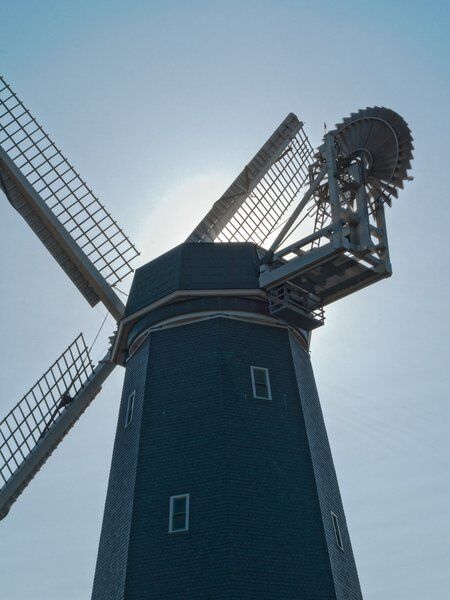
Restoration the Murphy Windmill
Early Efforts
The first major restoration took place in 1947, involving minor repairs and the replacement of the deteriorated sail stocks with 114-foot spars made from six tons of laminated wood shipped from Portland, Oregon. This effort was only a temporary fix, and the windmills continued to suffer from neglect in the following decades.
Campaigning for Restoration
In the late 1960s, after the mill’s blades were removed in 1966, Eleanor Rossi Crabtree, the daughter of former San Francisco mayor Angelo Rossi, spearheaded a campaign to restore the windmills. The Dutch Windmill received a cosmetic restoration in 1981. However, the Murphy Windmill required a more extensive renovation.
Major Restoration Efforts
In 2002, the Recreation and Parks Department launched a three-phase restoration project for the Murphy Windmill. The first phase involved cataloguing every piece of the mill, dismantling the wood and iron parts, and salvaging reusable materials. The cap structure was transported to Holland, where Dutch millwright Lucas Verbij fixed the 64-ton copper dome.
The second phase focused on rehabilitating the concrete base and the slate-clad tower, and fitting the restored cap, sails, and gears. The third and final phase included the installation of a water pumping system and landscape improvements around the windmill.
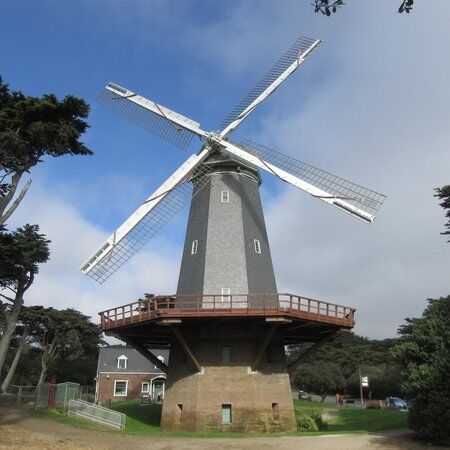
A Beloved Landmark
This restoration of the Murphy Windmill was completed in 2011, with the windmill being revealed at a Dutch Queen’s Day festival on April 28, 2012. Today, the efforts have ensured that both windmills remain beloved and iconic features of Golden Gate Park. The Murphy Windmill often turns its sails during special events like Bay to Breakers or Outside Lands. Since 2012, the Dutch community in the Bay Area has celebrated King's Day near the Murphy Windmill, honoring Dutch culture and traditions with games, food, music, and dancing.
Visiting the Murphy Windmill with CityDays
Location and Accessibility
The Murphy Windmill is located at the southwestern corner of Golden Gate Park, near the intersection of Great Highway and Lincoln Way. It is easily accessible by public transport, car, or bike. Ample parking is available nearby, making it convenient for visitors to explore the landmark and beyond.
What to Expect
Visitors to the Murphy Windmill can marvel at its impressive architecture and learn about its history through informative plaques and guided tours. The surrounding area has been beautifully landscaped, providing a serene setting for picnics, leisurely walks, and photography. The windmill's sails are often in motion, offering a glimpse into how they transformed the park in the early 20th century.
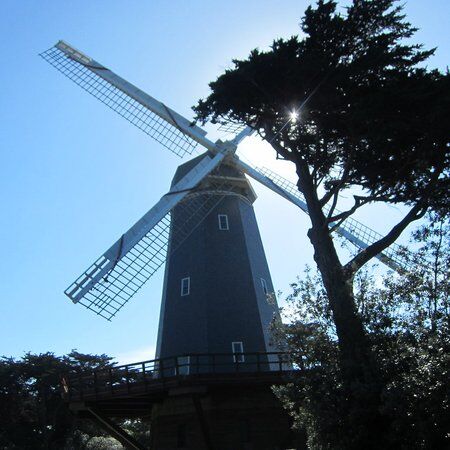
Nearby Attractions
After discovering Murphy’s Windmill, visitors can explore the rest of Golden Gate Park and the surrounding neighborhoods, looking for the San Francisco Conservatory of Flowers, hidden staircases and great hiking trails that lead to intriguing sculptures.
And if you want to discover the city in a more comprehensive way—with rest stops at cafes and bars along the way—why not embark on a CityDays Scavenger Hunt in San Francisco, and in particular our
Scavenger Hunt tours are a great way to bring family and friends—or even dates—together for an afternoon of great fun and adventure, solving clues and snapping photos. Clues will lead you to the big sights and those that you'd walk straight past.
Our Garden in the Sky Hunt is the perfect way to experience the city, and results in the discovery of a hidden rooftop garden.
For more information about our San Francisco Scavenger Hunts then click here: Top 6 Immersive San Francisco Scavenger Hunts & Treasure Hunts | CityDays
